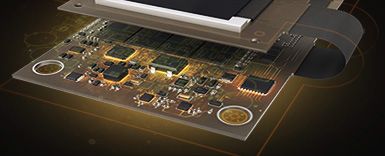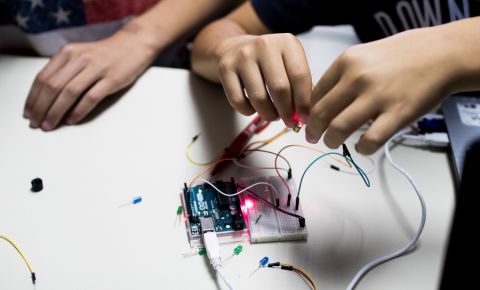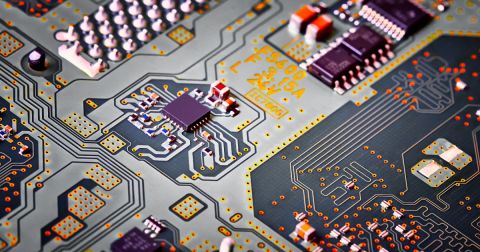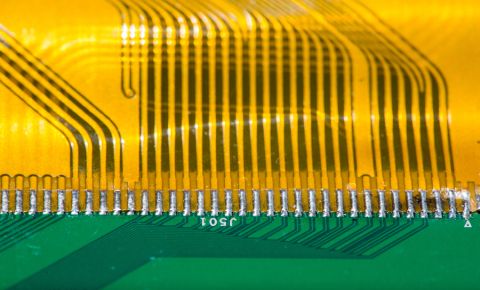Senior Citizens Wearable Technologies That Are Fashionable and Functional

Designing electronics for seniors demands a different mindset. These users aren’t chasing the latest gadget – they need real functionality, delivered with absolute simplicity and comfort. Meeting that need forces engineers to rethink everything from form factor to user experience. Fortunately, technologies like structural electronics are making it easier to build devices that feel natural and effortless.
Function First, Friction Nowhere
What makes wearable technology for elderly people truly valuable? It’s not the features – it’s whether they actually get used. That means engineers need to design for functions like health monitoring, fall detection, location tracking and medication reminders in ways that are automatic, reliable and easy to live with.
Consider the reality for many older users:
- Reduced vision, dexterity or hearing
- Mild cognitive decline or memory lapses
- Fatigue with complex interfaces
To be effective, devices must be nearly invisible in their operation and frictionless. That includes things like passive sensing, automatic alerts and intuitive feedback. For example, LEDs, haptic pulses and soft tones can gently confirm that a device is working, without requiring the user to ask.
It Has to Be Worn to Work
Wearables that aren’t worn are just shelfware. Comfort and discretion are essential – not features to trade off late in the design cycle. That’s why successful senior-targeted devices are often jewelry-like (rings, pendants) or integrated into familiar formats like watches.
Designing wearable technology for seniors means meeting them where they are – physically, cognitively and emotionally – with comfortable devices they’ll want to regularly wear.
Here are a number of noteworthy products commercially available:
- UnaliWear Kanega Watch – A voice-controlled smartwatch for seniors, offering fall detection, medication reminders and GPS tracking – all without needing a smartphone.
- LifeFone VIPx – This easy-to-use compact pendant offers emergency response, fall detection and GPS tracking, helping seniors quickly get help when needed.
- Ultrahuman Ring AIR – A minimalist smart ring with a six-day battery life, designed for continuous health tracking without calling attention to itself.
- Garmin Vivosmart 5 – A fitness tracker that monitors heart rate, sleep and activity levels with a user-friendly interface and long battery life, making it suitable for seniors aiming to maintain an active lifestyle.
These devices prioritize real-life usability over feature overload. It’s not about cramming more sensors into smaller packages – it’s about creating devices that fit seamlessly into daily routines, with simplicity as the ultimate design requirement.
Simplifying Interaction, Extending Battery Life
Engineers must think in terms of interaction and cognitive load – the mental and physical effort required to use the device. If that effort is too high, the device gets left on the nightstand. When possible, eliminate menus, taps and screens. Replace them with:
- Single-button operation
- Automatic data capture
- Gesture-based or voice-triggered events
Devices like the Mudra Band show a future where even simple hand gestures – like finger or wrist movements – can replace traditional taps and swipes, making devices more accessible for users with tremors, arthritis or limited dexterity. Designing with seniors’ real physical limitations in mind, rather than idealized scenarios, is essential for ensuring that wearable tech for seniors is accessible, intuitive and reliable.
When it comes to powering wearable technology for elderly people, long battery life is crucial, and so is easy recharging. Magnetic snap chargers, wireless pads and energy-efficient chipsets all help ensure devices stay operational with minimal user effort.
Structural Electronics: More Function, Less Bulk
To achieve new levels of comfort, usability and reliability, engineers are moving beyond traditional PCB designs. Structural electronics offers new ways to embed technology directly into everyday forms, making devices lighter, more flexible and easier to wear.
Traditionally, wearables were limited by the flat, rigid PCB. But technologies like injection-molded structural electronics (IMSE), printed electronics and 3D-MID (Three-Dimensional Mechatronic Integrated Devices) now allow circuits to conform to the body, not the other way around.
From a recent OnTrack PCB Design Podcast on Structural Electronics in Altium, product manager Jack Henriques explained how, with Altium’s latest 3D PCB design tools, “you can route traces over complex curved surfaces and the software maintains consistent trace width, helping avoid signal degradation, even in ergonomic shapes.”
This unlocks true wearability: electronics can now be built directly into wristbands, clips or even garments. Better yet, off-the-shelf MID assemblies – like those developed by Harting – are fully reflow-compatible and can be mounted using standard pick-and-place processes. That means mass production doesn’t have to wait on new tooling or custom workflows.
Jack Henriques added that many of these structural parts are built to withstand standard reflow temperatures and soldering processes. So, even advanced designs can be made using familiar manufacturing pipelines. And as new components continue to add capabilities and improve performance, designers can expect better signal behavior, improved RF transparency and more freedom to embed antennas or sensing surfaces right into structural forms.
Trust, Caregiving, and Data Transparency
The seniors using these devices may not be the people managing them. In many cases, caregivers, family members or medical staff will interact with dashboards, alerts or compliance records. That introduces a second layer of user design: one focused on data sharing, privacy and reliability.
For engineers, this means:
- Building in secure cloud sync or Bluetooth handoff
- Supporting multi-user access without adding steps for the senior
- Prioritizing tamper resistance and data integrity
- Including status indicators for both users and caregivers
Designing wearable tech for seniors also means building an ecosystem that caregivers and families can trust – without complicating the experience.
Safety, Compliance and Reliability
Beyond basic functionality, wearable devices for seniors must also meet higher expectations for reliability and user safety. Prolonged skin contact demands biocompatibility testing and resistance to irritants like sweat, soaps and lotions. Devices intended for daily wear must be built to endure repeated handwashing, impacts and environmental exposure – without sacrificing performance or user safety.
From an electrical safety standpoint, wearables should feature isolated conductive paths, insulated batteries and sealed enclosures to prevent short circuits or corrosion. Even when formal medical device certification isn't required, aligning with standards like IEC 60601-1 or basic FDA Class I device guidelines positions a product for greater trust and market acceptance.
Tools That Bridge Electrical and Mechanical Design
As wearable design moves beyond flat boards into embedded, flexible and ergonomic forms, traditional PCB tools are no longer enough. Engineers need tools that support structural electronics, curved layouts and tight mechanical integration.
That’s where Altium’s latest capabilities come into play, offering:
Structural innovations that support new wearable architectures
- Printed electronics layer stacks for flexible and molded substrates
- 3D component placement to match curved product forms
- Automatic dielectric pad creation for clean signal crossovers
Tighter integration between electrical and mechanical workflows
- Direct import of 3D mechanical models for precise alignment
- Design rule checks (DRCs) across rigid, flexible and printed structures
- Substrate updates that preserve routing and design integrity
This deep integration removes the guesswork between electrical and mechanical teams, so products get prototyped faster. There are fewer handoffs, less rework and greater confidence in manufacturability from the first iteration.
Make It Useful, Make It Invisible
The best wearable tech for seniors doesn’t look like technology at all. It’s comfortable, intuitive and quietly powerful – designed to fit naturally into daily life. That level of seamlessness only happens when engineers lead with empathy, design for simplicity and harness the right tools.
Explore how Altium supports wearable tech for every generation.










